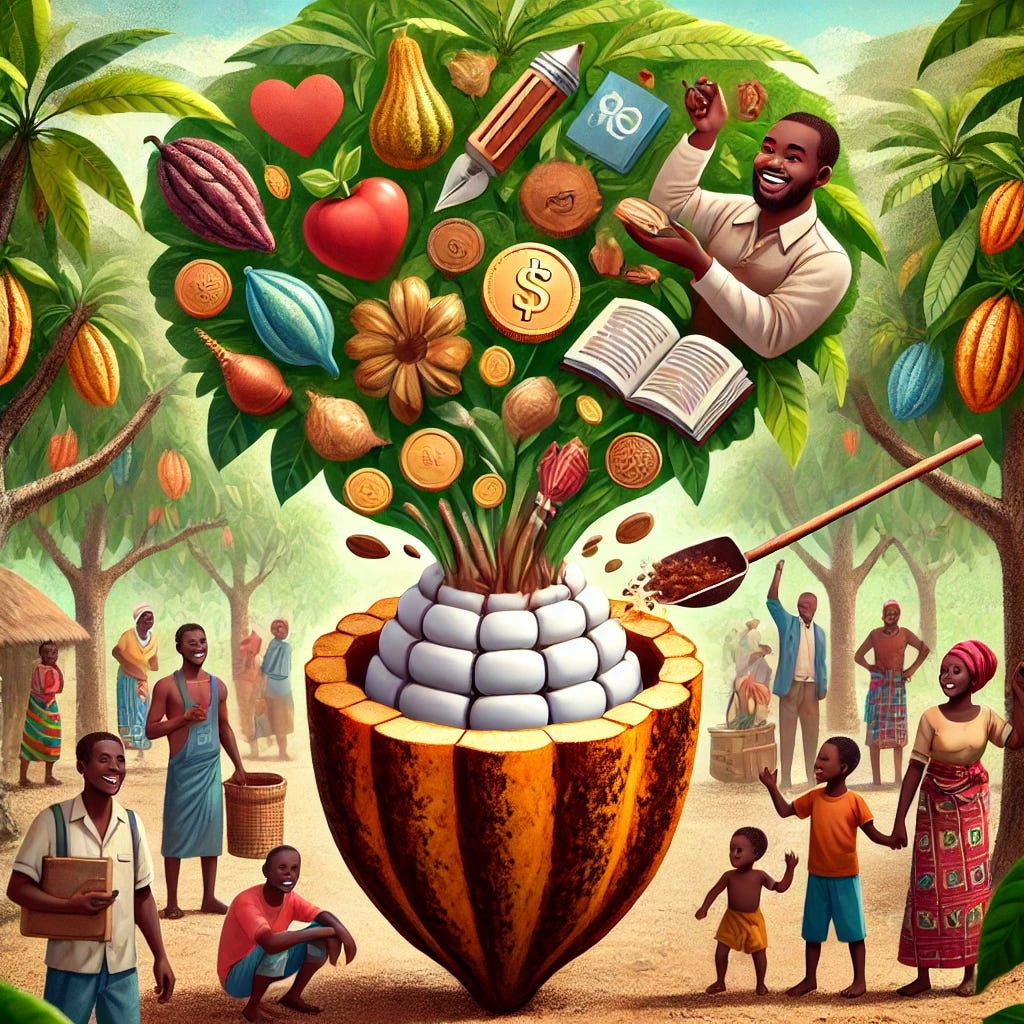Cancer or Cuts? Revisited: Why the Cocoa Sector Needs the Right Kind of Technology
When I first penned "Cancer or Cuts?" to examine the impact of technology in the cocoa sector, the response was overwhelming. The article began conversations, drew praise, and, admittedly, stirred some misunderstandings. Many readers interpreted my critique as an outright rejection of technology in cocoa farming. But let me set the record straight: I am not anti-technology. What I oppose is the introduction of technology that dismantles the social and economic infrastructure that has long supported cocoa farming communities.
The heart of my argument isn’t about resisting progress. It’s about ensuring that technological advancement in the cocoa sector strengthens communities rather than fragments them. I believe in technology that uplifts farmers, enhances their ability to extract value from the cocoa value chain, and preserves the social fabric that keeps these communities resilient. The problem arises when technology is introduced with a singular focus on production efficiency while overlooking the broader social and economic implications. For over a century, we have seen how increased yields and improved pest control haven't translated into sustainable livelihoods for farmers. I am not saying it’s not good. it is but that is or was a symptom of a bigger problem. Instead, these advances have often been used as bait-and-switch—promising better outcomes for farmers but primarily serving the interests of those higher up the value chain.
So, in this follow-up, I want to dive deeper. What does the "right kind" of technology look like in cocoa farming? How can we introduce innovations that retain social cohesion, ensure equitable wealth distribution, and empower farmers to control their share of the value chain? Let’s explore this together.
The Problem with the Wrong Kind of Technology: Lessons from the Past
Let’s start with the hard truth: For the past 100 years, technology in cocoa farming has been geared towards increasing production, better yields, pest control, disease resistance, and so on. On the surface, that sounds beneficial. But increased production hasn't equated to increased prosperity for the farmers. Instead, it has fueled a system where farmers are perpetually stuck at the bottom of the value chain, vulnerable to price fluctuations and exploited by multinational corporations.
Consider this: Fintech solutions have promised to protect farmers' earnings and streamline transactions. Yet, many of these platforms charge high transaction fees, accumulate farmers’ money for their gain, and offer predatory lending products that pull farmers deeper into debt. Similarly, technologies aimed at increasing yields have overlooked the fact that more cocoa doesn’t mean more money when farmers have no control over pricing and limited access to markets beyond raw cocoa bean sales.
This model has also eroded social structures within cocoa communities. Mechanised harvesters, for instance, might speed up harvesting, but they also eliminate jobs for those who once relied on cocoa farming for employment—plucking, pod breaking, transporting beans. When these roles disappear, so does the social fabric that binds communities together.
So, the question isn't whether technology is good or bad. The real question is: What kind of technology are we introducing, and who benefits from it?
The Right Kind of Technology and How It Empower Farmers and Strengthens Communities
What if we flipped the script? What if, instead of focusing solely on increasing production, we introduced technologies that help farmers extract more value from the cocoa they already produce?
Imagine introducing small-scale equipment that allows farmers to convert cocoa beans and their pods into value-added products like soap, cocoa butter, or artisanal chocolate. In this model, the pod breaker doesn’t lose its job. Instead, they become part of a more diversified value chain. Youth in the community could be trained to operate these machines, creating new employment opportunities and retaining wealth within the community and also the smallholder farmer.
For instance, a community-based processing unit
Keep reading with a 7-day free trial
Subscribe to Cocoa Diaries Newsletter to keep reading this post and get 7 days of free access to the full post archives.


